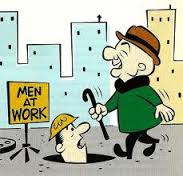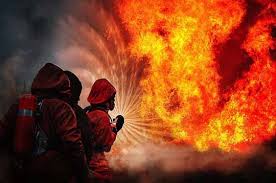 The primary mission in all emergency situations is to save lives and property. In some agencies when a new member is inducted into the organization they take an oath of office that includes pledging their commitment to this mission. The mission is an important – even noble – calling. But what happens when a responder is blinded by the mission? The result is mission myopia.
The primary mission in all emergency situations is to save lives and property. In some agencies when a new member is inducted into the organization they take an oath of office that includes pledging their commitment to this mission. The mission is an important – even noble – calling. But what happens when a responder is blinded by the mission? The result is mission myopia.
Mission myopia
 Mission myopia is the term I have assigned to the phenomenon where someone becomes shortsighted and, as a result, fails to see the bad things that are right in front of them. In some instances, mission myopia does not entail being blind to visual and audible clues and cues. Rather, it involves ignoring the presence of the information – critical information – indicating bad outcomes are on the horizon.
Mission myopia is the term I have assigned to the phenomenon where someone becomes shortsighted and, as a result, fails to see the bad things that are right in front of them. In some instances, mission myopia does not entail being blind to visual and audible clues and cues. Rather, it involves ignoring the presence of the information – critical information – indicating bad outcomes are on the horizon.
Blindness
 While I often talk about (and demonstrate) in my classes how teams can become blind to the critical information that indicates they are in (or about to be in) grave danger, in this section I am not referring to that sort of blindness. But it is worth acknowledgment that a and team member, under stress, can literally lose his or her field of vision or become deaf to their surroundings.
While I often talk about (and demonstrate) in my classes how teams can become blind to the critical information that indicates they are in (or about to be in) grave danger, in this section I am not referring to that sort of blindness. But it is worth acknowledgment that a and team member, under stress, can literally lose his or her field of vision or become deaf to their surroundings.
When a team member’s attention is focused entirely on accomplishing the mission, the visual and audible clues simply may not get processed into comprehension. If this happens, a team member is at risk because they may be looking right at a situation of grave danger and not realize it. The mind is elsewhere, so to speak. That “elsewhere” is being focused on the mission of victim rescue and extinguishment.
Denial of Clues
 In addition to having the potential of not comprehending critical clues and cues, a team member who is mission focused may also deny the severity of the clues and cues. When this happens, a team member may think: It’s not as bad as it looks. Or, I’ve seen, and made entry on worse situations than this. Denial is a way for a team member to look beyond the danger and justify highly risky actions.
In addition to having the potential of not comprehending critical clues and cues, a team member who is mission focused may also deny the severity of the clues and cues. When this happens, a team member may think: It’s not as bad as it looks. Or, I’ve seen, and made entry on worse situations than this. Denial is a way for a team member to look beyond the danger and justify highly risky actions.
Ignoring the Clues
 Ignoring the clues may be one of the most disappointing symptoms of mission myopia. I have interviewed dozens of individuals who, after a near-miss or casualty event, have admitted to me that they saw the indicators of grave danger, understood those dangers completely, and were not in denial that the conditions were grave. And then, in defiance of all logic, still entered the situation even though they admit to me (albeit after the fact) they knew the situation was grave.
Ignoring the clues may be one of the most disappointing symptoms of mission myopia. I have interviewed dozens of individuals who, after a near-miss or casualty event, have admitted to me that they saw the indicators of grave danger, understood those dangers completely, and were not in denial that the conditions were grave. And then, in defiance of all logic, still entered the situation even though they admit to me (albeit after the fact) they knew the situation was grave.
I commend these team members for making such admissions to me because it allows me to observe, investigate, understand and share this dangerous mindset. Sometimes, under some conditions, for some teams, a dedication to the mission of saving lives and property is all consuming. They seemingly know, even before they arrive at the emergency scene, they are going to go interior in an effort to fulfill their sworn duty to save lives and property. Once they arrive, the conditions, no matter how severe, never deter them from the mission. They are mission myopic.
Dr. Gasaway’s Advice
 All first responders and protection teams are sworn protectors of life and property. But not all lives and property are savable. And to think otherwise is delusional and dangerous. It is essential that when arriving on the scene of an emergency to conduct a complete size-up and risk assessment. Don’t be tricked by the situational awareness barrier of urgency and use the excuse there was no time to complete a size-up and risk assessment. As a responder you are required to assume risk at every call. But do everything in your power to never create the risk at a call.
All first responders and protection teams are sworn protectors of life and property. But not all lives and property are savable. And to think otherwise is delusional and dangerous. It is essential that when arriving on the scene of an emergency to conduct a complete size-up and risk assessment. Don’t be tricked by the situational awareness barrier of urgency and use the excuse there was no time to complete a size-up and risk assessment. As a responder you are required to assume risk at every call. But do everything in your power to never create the risk at a call.
Every emergency situation should begin with a size-up that is realistic. Is there the potential for savable lives? Here’s a hint. If responders make entry through the front door and within 30-60 seconds are trapped by collapse or caught in a flashover, that was not an environment conducive to the survival of civilians. No environment that severely burns or kills responders wearing full personal protective gear, under the protection of a hose line, is survivable by civilians. Be realistic. We cannot save everyone. No matter how much we want to. Not matter if we took an oath to do so.

Action Items
- Discuss a time when you, or someone you know, suffered from mission myopia. What was the outcome? Discuss how it could have been worse?
- Discuss some strategies for avoiding mission myopia.
- Discuss your process for making go/no-go decisions. If you do not have a process, work with your crew to develop one.
_____________________________________________________

If you are interested in taking your understanding of situational awareness and high-risk decision making to a higher level, check out the Situational Awareness Matters Online Academy.
CLICK HERE for details, enrollment options and pricing.
__________________________________
Share your comments on this article in the “Leave a Reply” box below. If you want to send me incident pictures, videos or have an idea you’d like me to research and write about, contact me. I really enjoy getting feedback and supportive messages from fellow first responders. It gives me the energy to work harder for you.
Thanks,

Email: Support@RichGasaway.com
Phone: 612-548-4424
SAMatters Online Academy
Facebook Fan Page: www.facebook.com/SAMatters
Twitter: @SAMatters
LinkedIn: Rich Gasaway
Instagram: sa_matters
YouTube: SAMattersTV
iTunes: SAMatters Radio
iHeart Radio: SAMatters Radio

Great Stuff!
Thank you Ethan for the support. I really appreciate it. Please help me spread the message about the blog, the newsletter and the podcast.